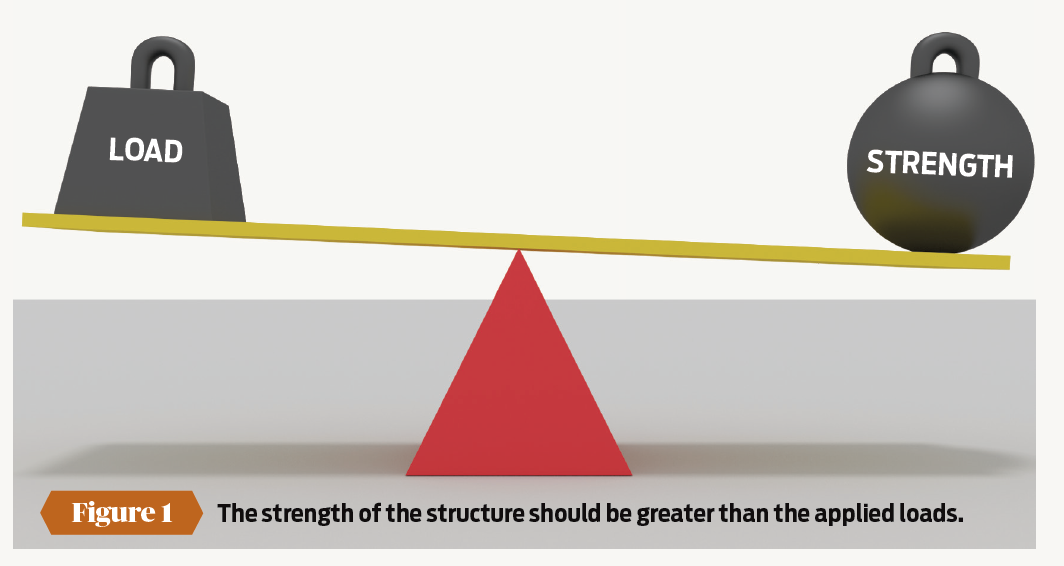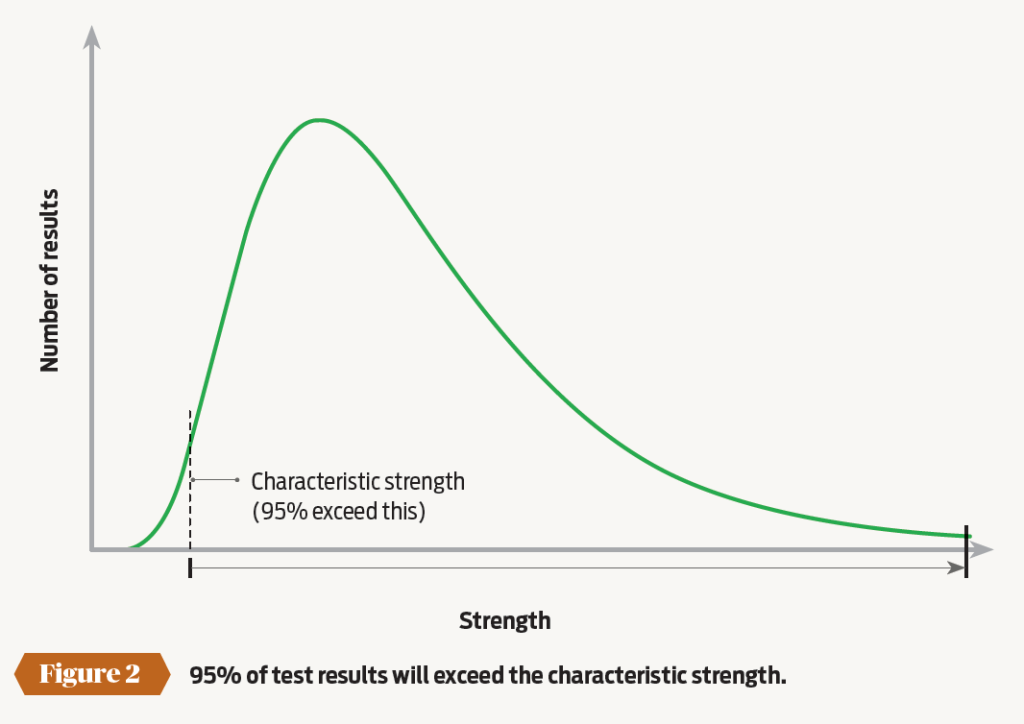Do you know your loads?
13 Jan 2015, Featured, Prove Your Know How, Technical

The meanings of characteristic strength, capacity, ultimate load and serviceability load are not always well understood – here we hope to clear up any confusion
A building’s structure is there for only one purpose – to resist the applied loads with a reasonable margin. The structural designer’s role is to size members and design connections, so that the strength of the structure is greater than the applied loads (see Figure 1 above).
Types of loads
Loads could be gravity effects (often called imposed loads), wind or earthquake action, among others. Strength is the resistance of the structural members to the loads. NZS 3604:2011 Timber-framed buildings refers to bracing loads on the building as demand, and to the bracing or fixing strength as capacity. So in the NZS 3604:2011 context, it’s merely a case of ensuring that the capacity of the fixing – nail, strap, bracket or bracing element – is greater than the demand (see Table 1 below).
Problem factors
However, in the specific engineering design (SED) context, slightly different terminology is needed to cope with a couple of problems:
- Load – we don’t know with certainty how many people will congregate on the floor, or how hard the wind will blow, or how big the earthquake will be over the life of the building.
- Strength – because of material and workmanship variability, we can’t predict exactly how strong a structural member or joint will be.
To make a level playing field for designers and to reduce this uncertainty, the New Zealand Building Code lays down the ground rules in clause B1 Structure, and the various New Zealand standards fill in the details (see Table 1 below).
“Based on lots of statistical studies over many years, it is well established that over the life of the structure, smaller loads occur more frequently than larger ones
Rare and frequent loads considered
Based on lots of statistical studies over many years, it is well established that over the life of the structure, smaller loads occur more frequently than larger ones. The Building Code and standards around the world deal with this by requiring structural designers to consider two limit states:
- Ultimate limit state (ULS) – the structure must resist a relatively rare load without failure (it may be damaged but should not collapse). For wind and earthquakes on typical buildings, that rare load is the one expected to occur on average only once in 500 years.
- Serviceability limit state (SLS) – the structure must resist a more frequently occurring load without deforming or deflecting to an extent that may affect its serviceability or amenity.
Verifying strength
The strength of a structure is normally verified by either design calculations or testing. Verification by design is based on material strengths set by the relevant material standards (concrete, timber and steel), and engineering calculation. This process gives the nominal strength of the structure.
Verification by testing involves testing a number of replicate members or components to failure. Because of the variability mentioned already, there will be a range of results that looks something like Figure 2; the problem then is to choose a suitable representative strength value.
The characteristic strength for structural design is set at the value that 95% of the test results will exceed (see Figure 2). To allow for site effects such as workmanship, the nominal or characteristic strength is multiplied by a reduction factor set by the material standard to give the design strength. This design strength is then balanced against the applied loads (see Figure 1). So, if you have a component whose strength is given as characteristic strength, the manufacturer or supplier needs to advise what its capacity is. Guidance on this is given in NZS 3604:2011 clause 2.4.7.

Register to earn LBP Points Sign in




